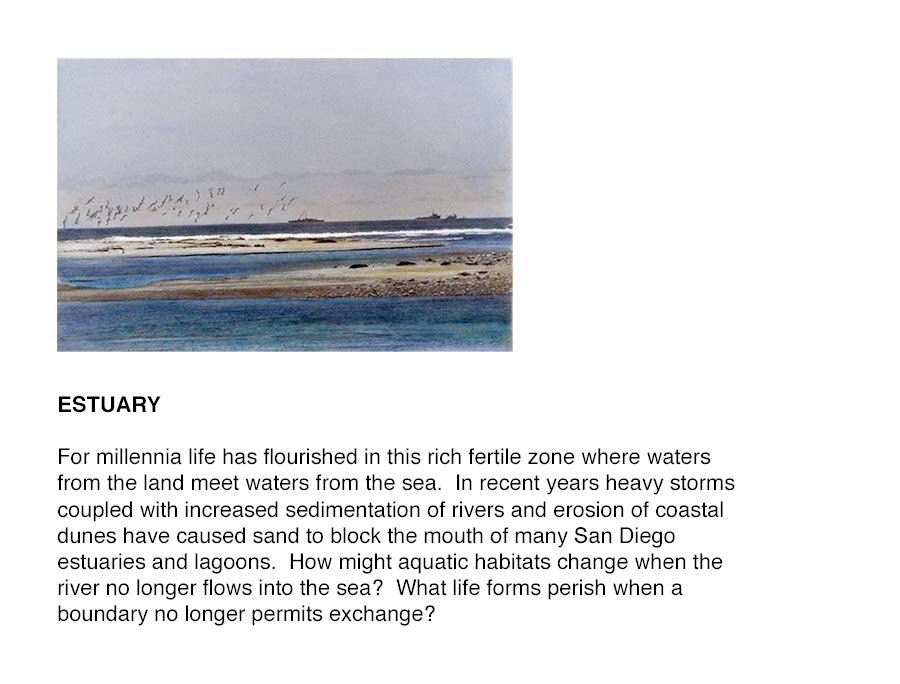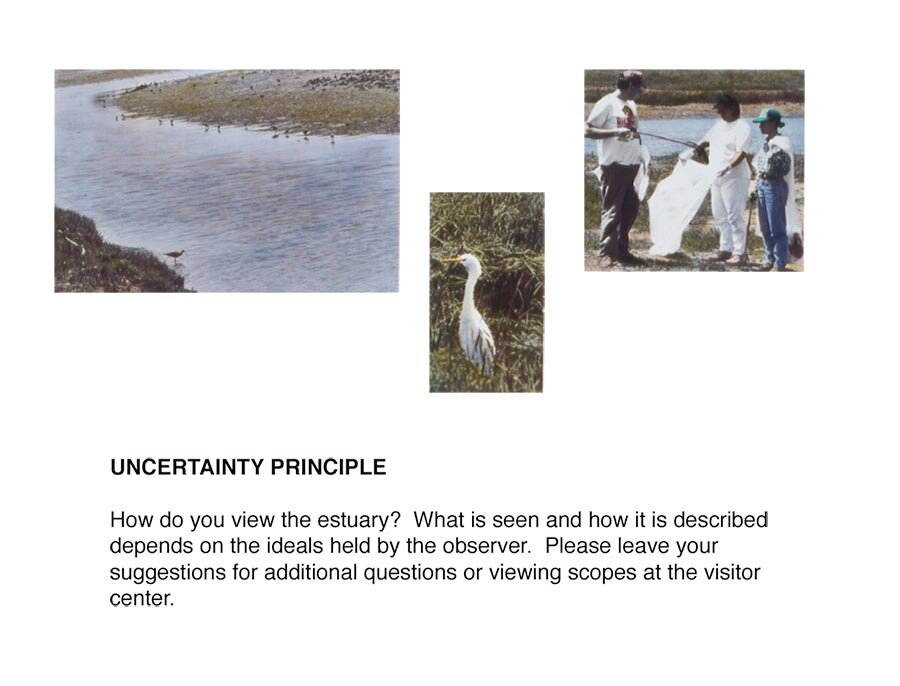VIEW POINTS
AT TIJUANA RIVER ESTUARY
text on introductory panel reads:
Before the advent of photography a popular pastime was to use a Claude glass to frame the perfect picturesque landscape. The viewer would stand with their back to the vista, moving the glass until the ideal image appeared. Rose, yellow, scarlet—the glasses even came in different colors to simulate the color of light at different times of day.
What is the ideal view of the estuary? At one time wetlands were viewed as wastelands. Later they glittered with dollar signs and were filled in to make prime shoreline real estate. By the seventies scientists sounded alarm, claiming that coastal wetlands were among the most productive habitats in the world.
This work is a proposal in a dozen questions:
Instead of answers it offers a suggestion to think ecologically, to examine relationships. The viewing stations point to phenomena from all parts of the estuary. Viewing scopes both frame and deliberately distort the view. Do we, like the users of the Claude glass, turn our back on nature in search of preconceived or idealized views?
Stop. Look. Listen. What can we learn?
Temporary installation, 1995. Images of selected viewing stations below. Click on a given image for a larger view:







